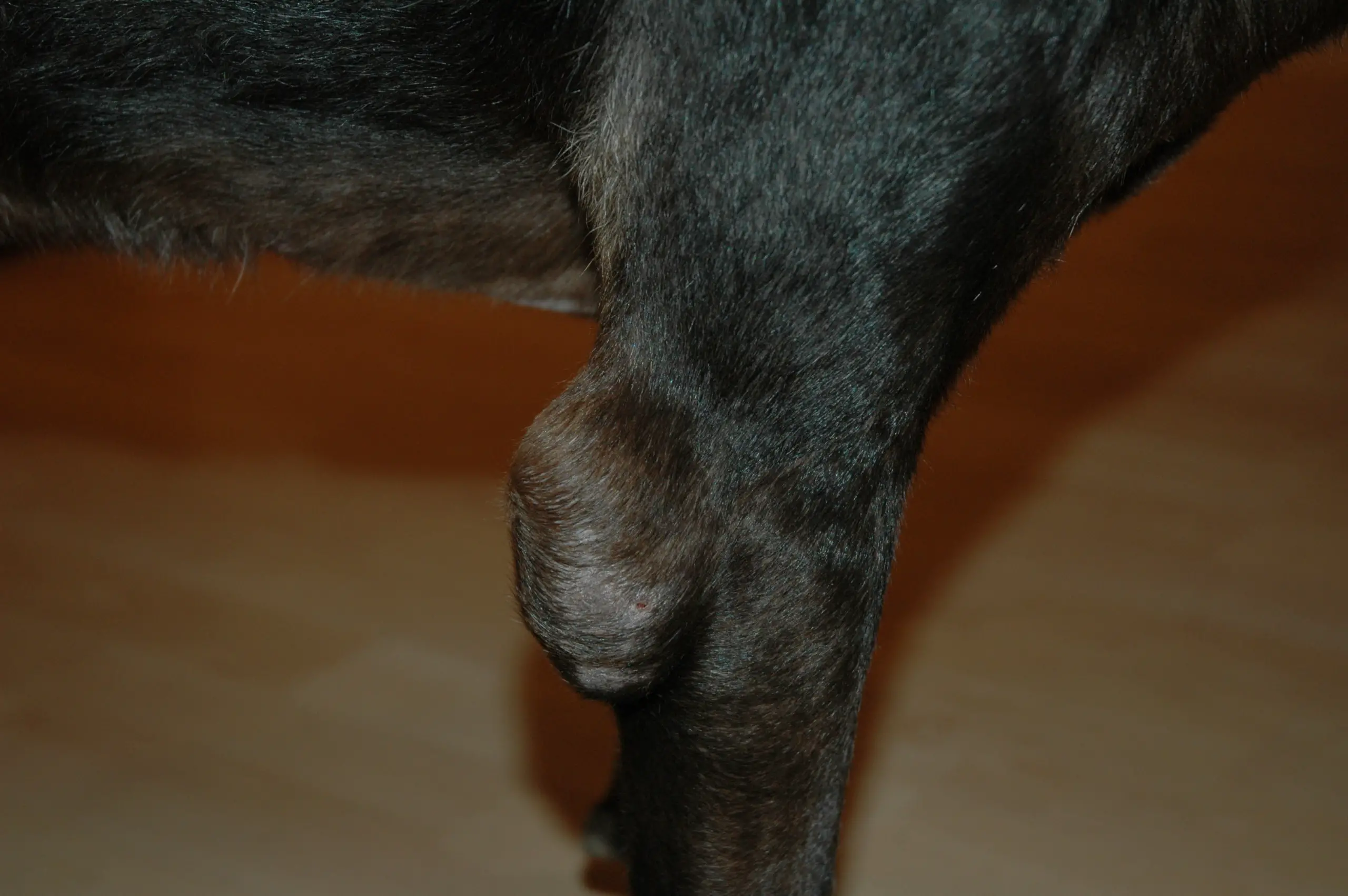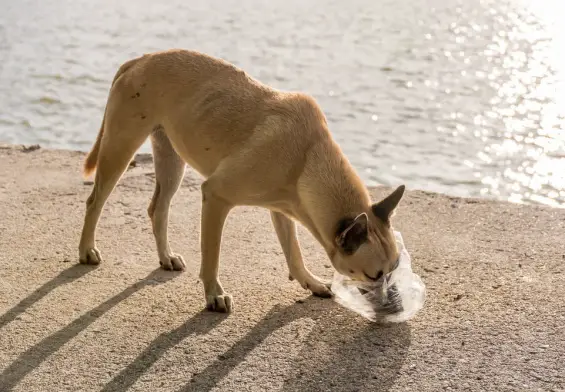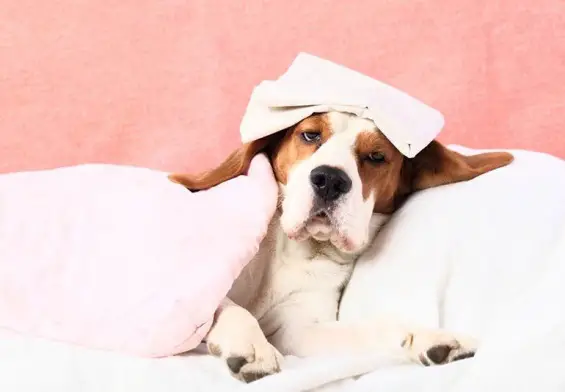Dog Elbow Hygroma – How to Get Rid of Swollen Elbows on Dogs
If you have a pet dog, there is a very good chance that you consider them to be a part of the family and even your best friend. In fact, that’s the entire reason why people get dog’s in the first place. But what happens when you start to notice that your dog is having symptoms of something or is not acting like themselves? When this does occur, you are going to want to do everything in your power to make sure that your dog has a quick and swift recovery. So, if you start to notice that your dog is having any type of swelling around the underside of their elbow or somewhere around his ankle or hip, then the condition that is known as hygroma is what may be the problem.
Here is everything that you are going to need to know about hygroma. What it is, how you can treat it and the accompanying symptoms, and even how you can help prevent your dog from getting it in the first place.
What Exactly is Dog Hygroma?
If your dog is suffering from a hygroma, they are going to have swelling that is full of fluid. This fluid filled swelling is going to develop underneath your dog’s skin. To give you a much better visual of what it is going to look like, imagine that you have a water balloon that is filled with water right underneath the skin of your dog, which is exactly what it is going to look like and even feel like when you touch it.
When it comes to hygromas, they have the ability to show up just about anywhere that there is going to be a repeated trauma taking place on the skin from lying down on surfaces that are hard. Some of the most common places that your dog is at risk for having a hygroma is going to be:
- On the underside of their elbow
- Around their hock or ankles
- On their hip, which is also referred to as the ischial hygroma
If your dog does have a hygroma, you may be wondering if it is painful for them at all. While the smaller sized hygromas may not necessarily be very painful, if they are not addressed, they will continue to grow into larger and larger hygromas. When this happens, it puts the hygroma at a higher risk for becoming infected or inflamed. If you allow this to happen, they it is definitely going to start becoming painful and causing your dog pain and angst. So the best thing that you can do if your dog does have hygromas, is going to be to visit your local veterinarian as soon as possible.
What Can Cause a Dog Hygroma?
When your dog has a hygroma, you may have wondered how they got it in the first place. Hygromas are going to form in your dog as a response to some type of repeated pressure trauma that has taken place to their skin, their fascia (which is going to be the connective tissue that lays right beneath their skin), and the muscles that overlay on one of their bony prominences. When your dog has a body part that is repeatedly under pressure, their body is going to have an internal response to try and create some type of protective inflammatory response in order to make a ‘pillow’ that is able to provide a cushion to that part of their body. Essentially, hygromas are going to appear as a defense mechanism from repeated trauma to a certain part of your dog’s body.
For the most part, hygromas are normally only going to occur in doges that are larger in size or overweight. When these dogs are constantly lying down on surfaces that are not soft, such as tile, hardwood or concrete. If your dog does continue to continuously lie down on these types of hard surfaces, the hygroma is going to continue to grow larger and larger in size, potentially leading to some type of secondary complications. When this happens, the health of your dog is going to get even worse, so it is always best to try and make sure to get any hygromas treated as quickly as possible. This is going to be the best way that you can protect your dog from developing any other conditions that can be more severe.
Symptoms of a Dog Hygroma
When a hygroma first shows up in your dog, it is going to feel and look very squishy. This is because it is a lump that is full of fluid that is located right underneath the skin on one of the bony parts of their body. The areas that they hygroma is most commonly going to occur will be either your dog’s hip, elbow, or their ankle, also referred to their hock.
During the early stages of your dog’s hygroma, it is more than likely going to be too small for you to see, so you will more than likely not have any clue that it is even there. That is until you take your dog into the veterinarian for their checkup. This is because the vet will be able to feel and notice it, which they will then be able to convey that information over to you.
Later stage hygromas however, are going to be something that will be hard to miss. If your dog is suffering from late stage hygromas, there are more than likely going to be hard, and if they have had the time to grow hard or big enough, they do have the ability to prevent your dog from lying down on that side altogether. If this is the case, you are going to want to be sure that you have your dog seen by the veterinarian as soon as possible to prevent any further complications from the hygroma from occurring.
If the hygromas are left untreated, they do have the potential to become infected, which will in turn start to cause your dog even more discomfort and pain. Some of the sings that your dog’s hygroma may be infected are going to include:
- You will notice a weeping fluid
- Bacterial skin infection that is very deep
- A formation of black heads around the hygroma area
- Hair follicles that have become inflamed around the site of the hygroma
When you are searching your dog for any signs of hygromas, just be aware that they can be easily confused with calluses if you do not know what you are looking for. This is because calluses are very commonly going to develop in the same general areas that a hygroma is going to develop and they can be very easily confused with each other. The main difference between a callus and a hygroma is going to be that a hygroma is going to develop swelling underneath your dog’s skin and is not necessarily going to cause your dog to lose any of their fur in that area. Calluses on the other hand, are going to develop on top of your dog’s skin and are going to be more a thickened area that is more of a grey color and has hair loss in that area. Essentially, a hygroma is going to occur underneath your dog’s skin, while a callus is going to occur on top of your dog’s skin. If you are looking your dog over for any hygromas though, when you see calluses in a certain area, it is going to be a warning sign that you need to start having your dog stop lying on that side or on the hard surfaces that they are lying on regularly. This is going to be one of the best ways that you can prevent hygromas from occurring in your dog.
Diagnosing Hygromas in Your Dog
Whenever you notice that your dog is having any type of skin swellings in any area, it is something that you are going to want to bring to the attention of your local veterinarian sooner rather than later. If you find something that you think may be a hygroma, be sure to contact your vet and make an appointment for as soon as you possibly can. Just remember that prevention is going to be the best form of treatment.
If you do wish to give your dog a look over for any potential hygromas, they are going to be diagnosed by the fact that your dog has a history of lying down on surfaces that are considered to be hard, as well as the findings from a physical exam. While you are more than likely not going to be doing this kind of test, a veterinarian may also want to do some laboratory testing, one that may consist of using a fine needle to aspirate the skin swelling in order to rule out some of the other potential conditions that it can be. Some of these other conditions that will need to be ruled out will include several different types of infections and even skin tumors.
If your dog does end up developing a hygroma from lying on hard surfaces too much, it is going to be very important for you to know why they are forming. Is your dog too heavy and overweight? Is it too hot out for your dog? Do they have any other health conditions such as heart disease, arthritis, or some type of hormonal condition that is making them more tired than usual? If your veterinarian suspects that any of these other conditions may be the culprit, they are definitely going to recommend that you have additional testing done in order to rule these conditions out.
Getting Rid of Hygromas
If your dog does have a hygroma, you are probably wondering how you are going to help them get rid of it. Luckily for you and your dog, if you are able to catch the hygroma early enough, all you need to do to treat it is to cushion the side of your dog that is infected from hard surfaces. By providing your dog with a well-padded and supportive type of surface that they are able to lay on, such as a cushioned mat or bedding, is going to be the most important part of your dog’s treatment plan in preventing they hygroma from growing any larger than it already is.
If your dog is refusing to lay on a soft bed, you can always take advantage of protective elbow hygroma pads or sleeves that have been specially designed to help provide your dog with as much cushion as possible when they are suffering from an elbow hygroma. If you do decide that you are going to utilize the dog hygroma sleeve, you need to be sure that you put a long-sleeve shirt on your dog and over the hygroma sleeve to help prevent them from trying to take the sleeve off while you are not paying attention.
Once you have provided your dog with the right amount of protection and cushioning, most of the smaller to medium sized hygromas that have not become infected are going to resolve all on their own. You may have your veterinarian recommend that you have them drain the hygroma or even treat it with laser therapy to help speed up the healing process, this is not necessarily going to be something that you will need to put your dog through. If your dog’s hygroma has become infected, they will need antibiotics to help cure the infection.
When left untreated and allowed to grow to become a large hygroma, you may need to bring your dog in for surgery, which is always going to be a last choice type of treatment. If this is the case, be sure that you talk about all of your other options prior to deciding to get the surgery if you are able to. Your veterinarian will be able to inform you of all your choices and which is going to be the best for your dog and their particular circumstances.





